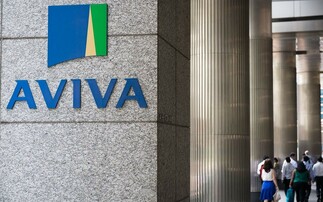Fiona Murphy discusses how Association of British Insurers (ABI) guidelines on e-Signatures could improve the protection journey, if adopted across the industry.
This may seem like a small change to other industries. At the moment there are several apps that consumers can use to sign PDF documents using devices such as iPads. DocuSign is perhaps the most prominent example of this.
However, it is a major move forward for protection with the ability to make applications for cover quicker and smoother.
Over the past few months there has been sustained debate about the best way to improve protection journeys following the BMA and ICO's concerns.
However, the system of using GP reports, Subject Access Requests (SARS), which these groups believe breach data protection, had been introduced by some insurers to try to speed up the cumbersome gathering of medical evidence.
At the moment, those with less than perfect medical histories, currently experience delays while underwriters wait for their reports from the applicant's GPs, for anywhere between 4-6 weeks.
With the new guidelines approved by medical organisations such as the BMA, securing online consent for policyholders' medical data could help shorten the process and help them get covered more quickly.
The guidelines have been praised by several figures in the protection industry as game-changer.
Guy Williams, director at technology firm Liss Systems agreed saying: "We believe the use of e-signatures with the 20 - 30% of people whose medical records need to be accessed means the underwriting journey for protection products will be reduced by around two weeks, and will minimise drop outs."
Mark Dennison at adviser firm LightBlue said: "More often than not [customers] want to arrange cover online or by phone. It makes sense for them to be able to provide insurers with their consent for medical reports electronically at the point of sale, as opposed to an old fashioned ‘wet' signature that causes delays.
"The current process of getting written permission does not ideally suit today's consumer behaviours."
EU legislation dating back to 2000 has regulated usage of e-Signatures in contracts. Yet protection insurance and GPs have been slow to adapt.
In tandem, insurers are moving to models such as predictive underwriting or straight through processing yet around 20% of applicants still require medical underwriting.
Andrew Wibberley, director at Alea Risk said of the e-Signature guidelines: "It's a relief that it's finally come and one of those things talked about for over a decade.
"The current process [of securing GP evidence] being so slow has prompted developments such as investment in straight through processing and using GPs as little as possible. We are seeing 6 weeks average for GP medical evidence return."
He added that with the advent of technology such as quotation portals, advisers and their customers would have experienced a "bump" in the journey by an online journey stalled by paperless processes for signature consent.
Kevin Carr, chief executive of the Protection Review said: "I think it could really make a difference because the industry desperately needs to make the process of applying for cover both quicker and easier, which this will do.
"I've used e-Signatures myself in the past - you just click a button on your phone, tablet or PC and it's done - no need to wait for forms in the post, no to work out which bits to sign and so on. The IFAs I've spoken to on this in the past are very keen to see it embraced by insurers."
Will it be a differentiator for IFAs - would they recommend one insurer over another if they accepted e-Signatures?
Wibberley is doubtful - he said: "I don't see that IFAs would choose a company over another because they're using e-signatures. Some may argue it would come back quicker.
"However, I don't think there is a great deal of pressure for insurers to invest in e-signatures. I would assume some companies would make this a differentiator but what will prompt insurers to make that change? I think they will wait to include it unless they are fundamentally changing their processes or other insurers start to do it."
Many IFAs continue to be very paper based or use face to face contact which also is a potential stumbling block that will need to be addressed, while others who currently use online or phone advice models may be quicker to adopt it for customers.
Insurer innovation?
Despite the guidelines now being in place, insurers will not be able to change their systems and compliance overnight. Will they revisit their processes in line with the ABI's guidelines?
Zurich and Royal London both welcomed the move as a step forward for the industry.
However, there may be other areas they will need to address to make sure the process is robust.
Paul Roberts, head of protection at Old Mutual said: "Developments that make things easier and quicker for clients, as well as insurers, are beneficial.
"This is especially useful if there's a secure and consistent approach in place so we are pleased to see the various parties come together to set out an approach to the use of e-signatures."
A spokesperson for L&G said: "We do not currently accept e-signatures. It is something we may be willing to consider but we need to review the impact and issues in terms of implementation including IT security etc."
Liss Systems has been working on a solution. Williams said: "Over the last 12 months we have been working closely with industry bodies, insurers and our global e-signature partner DocuSign to bring this technology to the UK protection market, through Liss AMRAdigital."
Nicky Bray, chief underwriter UK Life, retail propositions at Zurich UK was involved in the ABI IT working group which consulted with the GP groups.
She said: "What we have seen is distributors implementing software solutions for e-Signatures such as DocuSign or Adobe Echosign.
"Insurers are large companies with complicated IT systems, implementing and integrating e-Signatures for new business will take longer than one would hope.
"It might be something for distributors [such as quote portals, networks or adviser firms] to implement and for insurers to accept."
Questions
There are several questions about the guidelines and proper use of e-Signatures that will need to be ironed out. One issue is fraud.
Bray said:"One of the ABI guidelines is to leave a robust audit trail. Adobe and DocuSign have authentication certificates that record the exact time and date the signature was placed, the email address it was sent to and the IP address of the computer used.
"Compare that to the paper trail at the moment - you post the consent and you may send it via special delivery but with e-Signatures you can track when and where it was signed."
Of course if say a spouse had access to a policyholders's email address, they could sign something on their behalf. But the time and date function does make it a more water-tight process for people to prove it they signed it or not.
Another issue is that while the medical organisations did produce these guidelines for medical consent with the ABI, there is no compulsion for GP surgeries to actually adopt these. Will they accept e-Signatures?
Bray concluded: "I think GPs will probably accept these but an issue is that many GP surgeries tend to still be very paper based. It might be a case that the underwriter prints off the signature as consent when received and posts it to the GP practice. They could also send the authentication certificate with it for further proof of the time and date signed.
"I think it is a step to bring the underwriting process into the 21st century, but it is one part of the whole process. There is separate work going on with [electronic GP record provider Niche Health] to make GP reports electronic [to be sent via GPs and insurers.] I think that would reduce the time that underwriters wait for GP reports and make an underwriting decision from the current time period of around four weeks to one week."
All in all, it seems that the adoption of e-Signatures is just one piece in the puzzle of improving the protection journey.
Further reading
Updated: ABI sets out principles for insurer use of e-Signatures
Analysis: BMA urges GPs not to comply with insurer SARs











